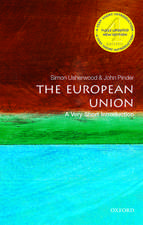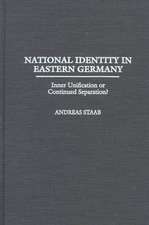The European Union Explained, Third Edition – Institutions, Actors, Global Impact
Autor Andreas Staaben Limba Engleză Paperback – 14 iul 2013
Preț: 145.60 lei
Nou
27.86€ • 28.98$ • 23.00£
Carte în stoc
Livrare din stoc 04 martie
Specificații
ISBN-10: 0253009723
Pagini: 264
Ilustrații: black & white illustrations, black & white tables
Dimensiuni: 157 x 233 x 20 mm
Greutate: 0.39 kg
Ediția:3 Rev ed.
Editura: MH – Indiana University Press
Cuprins
Preface; Acknowledgments; List of Acronyms; List of TablesPart 1. The Evolution of the European Union 1. Parameters of European Integration; 2. EnlargementPart 2. Institutions 3. The European Commission; 4. The European Council; 5. The Council of Ministers; 6. The European Parliament; 7. The European Court of Justice; 8. Checks and BalancesPart 3. Policies 9. The Single Market and Competition; 10. Regional Policy and Cohesion; 11. The Common Agricultural Policy; 12. Economic and Monetary Union; 13. Justice and Home Affairs; 14. Common Foreign and Security Policy; 15. Trade and the Common Commercial Policy; 16. EnvironmentPart 4. Crisis and Future Plans 17. The Eurozone and the Sovereign Debt Crisis; 18. The Multiannual Financial Framework for 2014-2020ConclusionNotes; Bibliography; Index
Recenzii
Notă biografică
Andreas Staab is the founder and director of EPIC the European Policy Information Centre, a UK-based consultancy on the European Union. He teaches in the London programs of three North American universities and is author of National Identity in Eastern Germany."
Descriere
This brief and accessible introduction to the European Union is ideal for anyone who needs a concise overview of the structure, history, and policies of the EU. This updated edition includes new chapters on the Eurozone financial crisis and background on the multiannual financial framework for 2014-20. Andreas Staab offers basic terms and interpretive frameworks for understanding the evolution of the EU; the overall structure, purpose, and mandate of its main constituent divisions; and key policy areas, such as market unification and environmental policy.



























